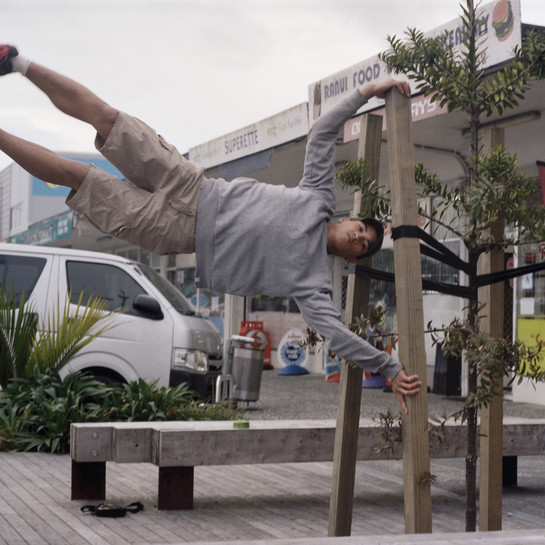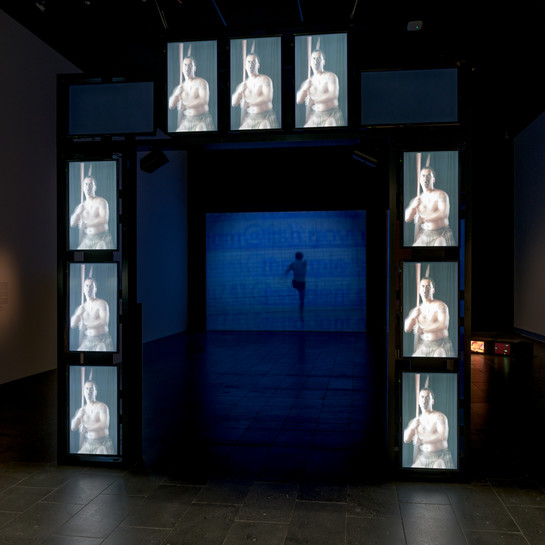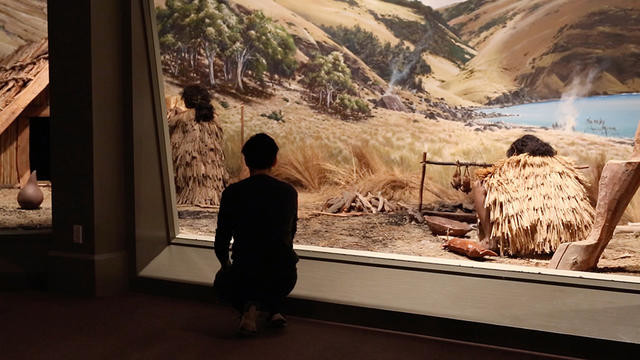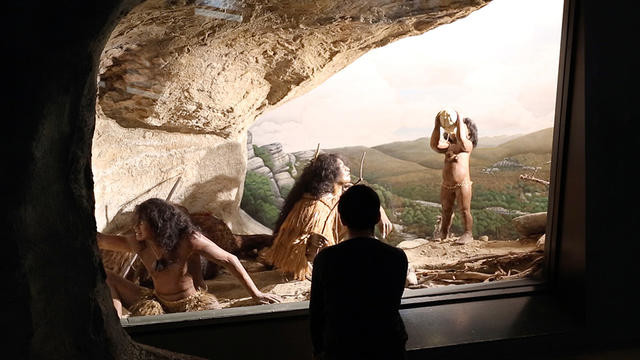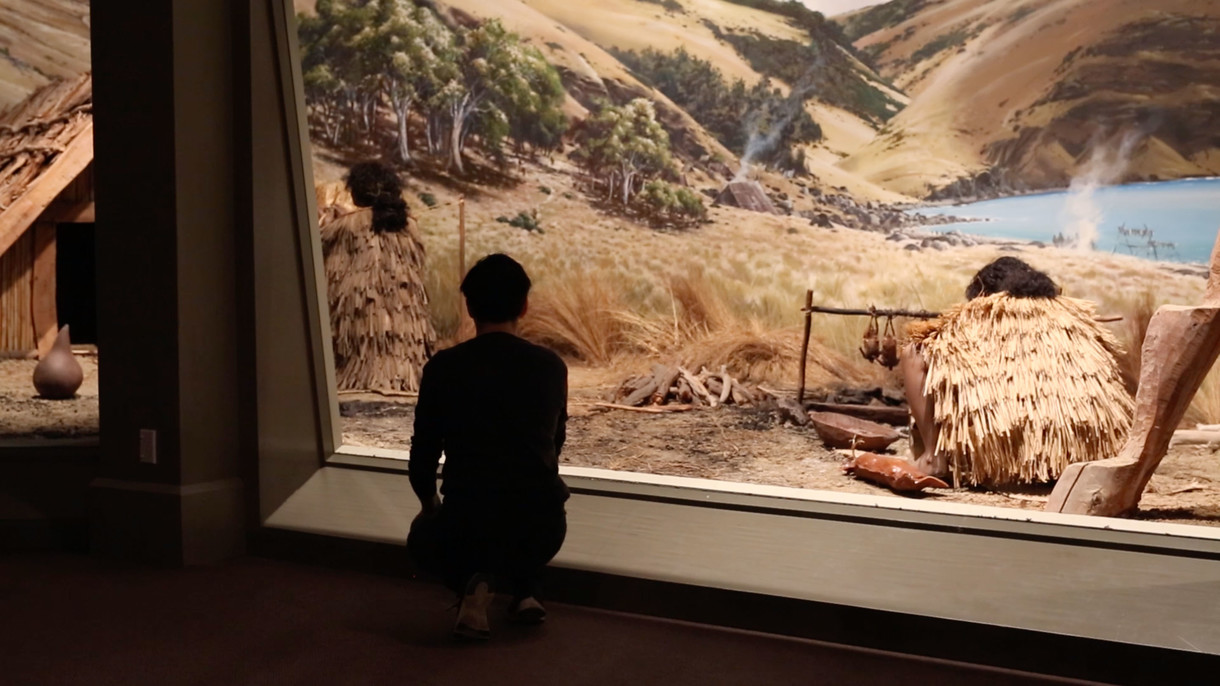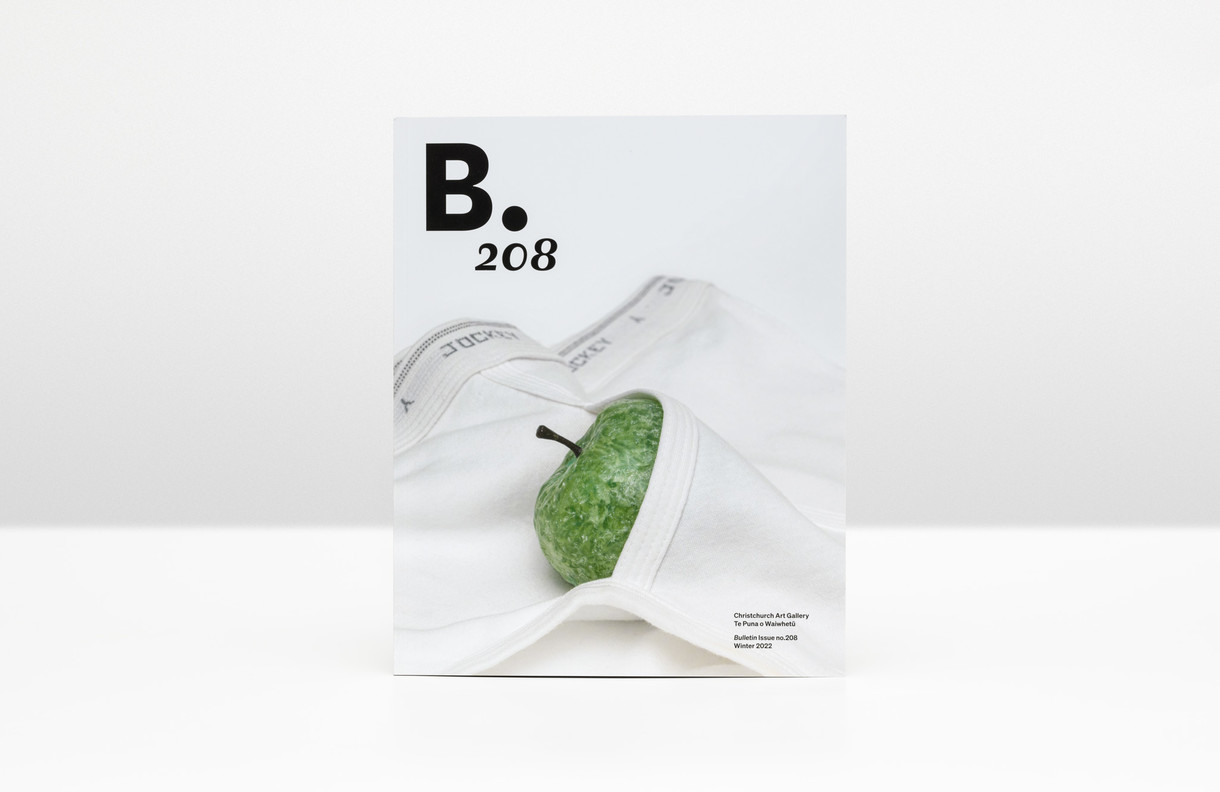Ana Iti
Aotearoa New Zealand, b.1989
Te Rarawa,
Muriwhenua,
Ngāpuhi,
Māori
Treasures Left by Our Ancestors
- 2016
- Single-channel digital video, colour, sound, duration 4 mins 40 secs
- Purchased 2019
- 2019/066
- View on google maps
Location: Sir Robertson and Lady Stewart Gallery
Tags: birds (animals), buildings (structures), caves, drinking, fires (events), food, installations (exhibitions), museums (buildings), people (agents), spits (cooking and heating devices), windows
Ana Iti made this work in response to two controversial dioramas at Canterbury Museum titled Iwi Tawhito – Whenua Hou /Ancient Peoples – New Lands and Ngā Taonga tuku iho o Ngā Tupuna / Treasures Left to Us by the Ancestors . In the video, we see the artist crouching in front of the displays, positioning the contemporary body in relation to the constructed scenes, while museum visitors walk past. Ana explains, “It was as if Māori had never been explorers who came to Aotearoa using a sophisticated system of navigation by the stars and ocean currents. That, instead, they passively sat while, according to the accompanying display text, ‘The sea supplied an abundance of fish, marine mammals, shellfish and other foods’.
” Treasures Left by Our Ancestors critiques how public information about Indigenous peoples and cultures is created and disseminated by museums. Displays such as these are often seen as factual, even though they are generated from colonial or Western knowledge frameworks, and are not necessarily the whole story. In this work, Ana answers and attempts to understand this version of history – literally getting on the level of these ancestors.
(Perilous: Unheard Stories from the Collection, 6 August 2022- )
Exhibition History
Treasures Left by Our Ancestors by Ana Iti (Te Rarawa) was made in response to two permanent exhibitions at the Canterbury Museum, entitled 'Iwi Tawhito - Whenua Hou /Ancient People - New Land' and 'Ngā Taonga Tuku Iho o Ngā Tupuna /The Treasures Left to us by our Ancestors'. The video captures the artist crouching in front of the dioramas, positioning the contemporary body in relation to these constructed scenes, while museum visitors walk nonchalantly past the displays.
Iti explains, “It was as if Māori had never been explorers who came to Aotearoa using a sophisticated system of navigation by the stars and ocean currents. That instead, they passively sat while, according to the accompanying display text, ‘The sea supplied an abundance of fish, marine mammals, shellfish and other foods’.”
The work critiques how public information about indigenous people and culture is created and disseminated through museums. Displays such as these are often presented and perceived as factual even though museological narratives and histories are generated from specific positions, produced within Western knowledge systems, and are not necessarily the whole story. In this work, Iti answers and attempts to understand this version of history - literally getting on the level of these ancestors.
(Melanie Oliver, April 2020)
